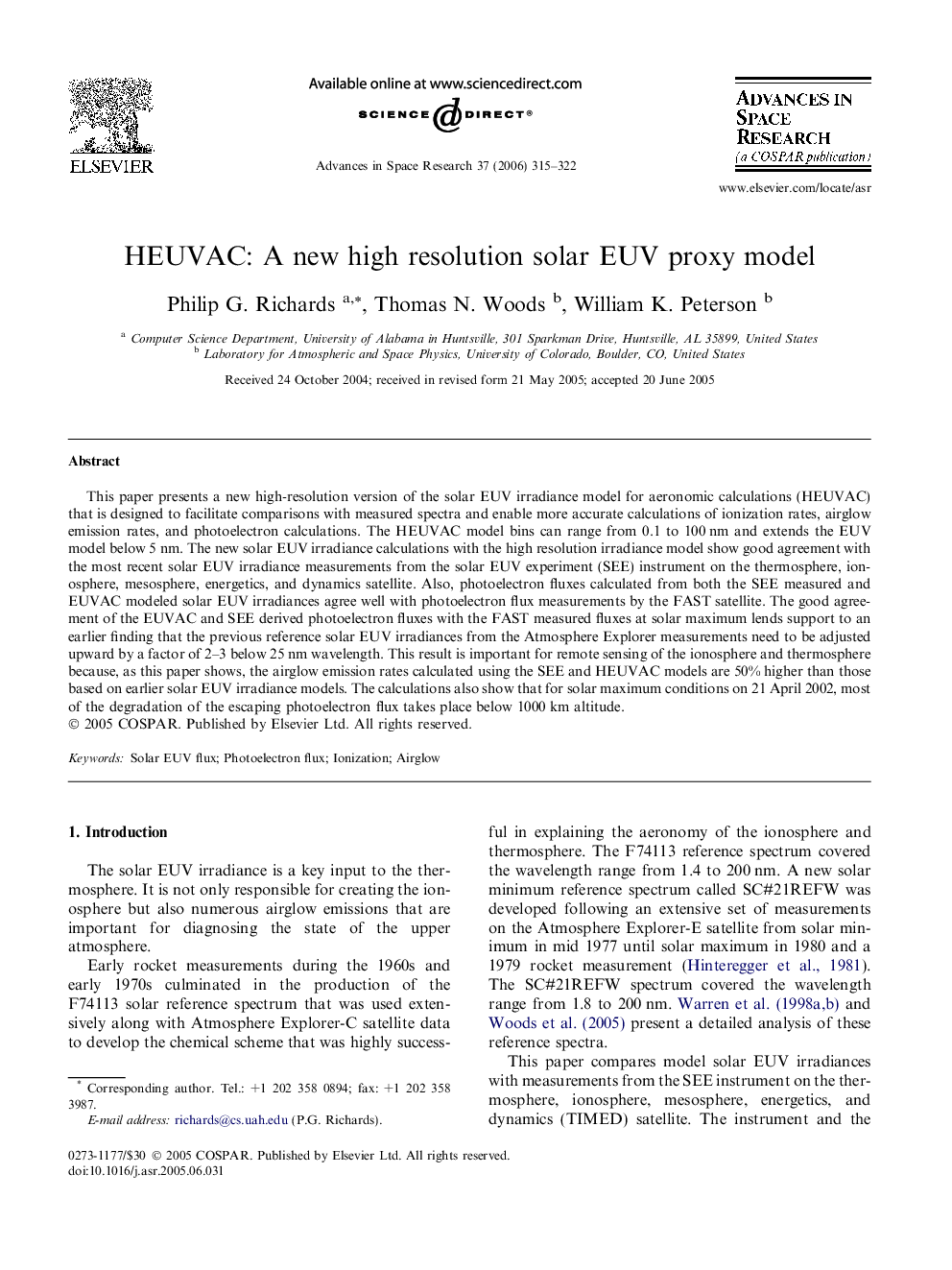| Article ID | Journal | Published Year | Pages | File Type |
|---|---|---|---|---|
| 1767418 | Advances in Space Research | 2006 | 8 Pages |
This paper presents a new high-resolution version of the solar EUV irradiance model for aeronomic calculations (HEUVAC) that is designed to facilitate comparisons with measured spectra and enable more accurate calculations of ionization rates, airglow emission rates, and photoelectron calculations. The HEUVAC model bins can range from 0.1 to 100 nm and extends the EUV model below 5 nm. The new solar EUV irradiance calculations with the high resolution irradiance model show good agreement with the most recent solar EUV irradiance measurements from the solar EUV experiment (SEE) instrument on the thermosphere, ionosphere, mesosphere, energetics, and dynamics satellite. Also, photoelectron fluxes calculated from both the SEE measured and EUVAC modeled solar EUV irradiances agree well with photoelectron flux measurements by the FAST satellite. The good agreement of the EUVAC and SEE derived photoelectron fluxes with the FAST measured fluxes at solar maximum lends support to an earlier finding that the previous reference solar EUV irradiances from the Atmosphere Explorer measurements need to be adjusted upward by a factor of 2–3 below 25 nm wavelength. This result is important for remote sensing of the ionosphere and thermosphere because, as this paper shows, the airglow emission rates calculated using the SEE and HEUVAC models are 50% higher than those based on earlier solar EUV irradiance models. The calculations also show that for solar maximum conditions on 21 April 2002, most of the degradation of the escaping photoelectron flux takes place below 1000 km altitude.
